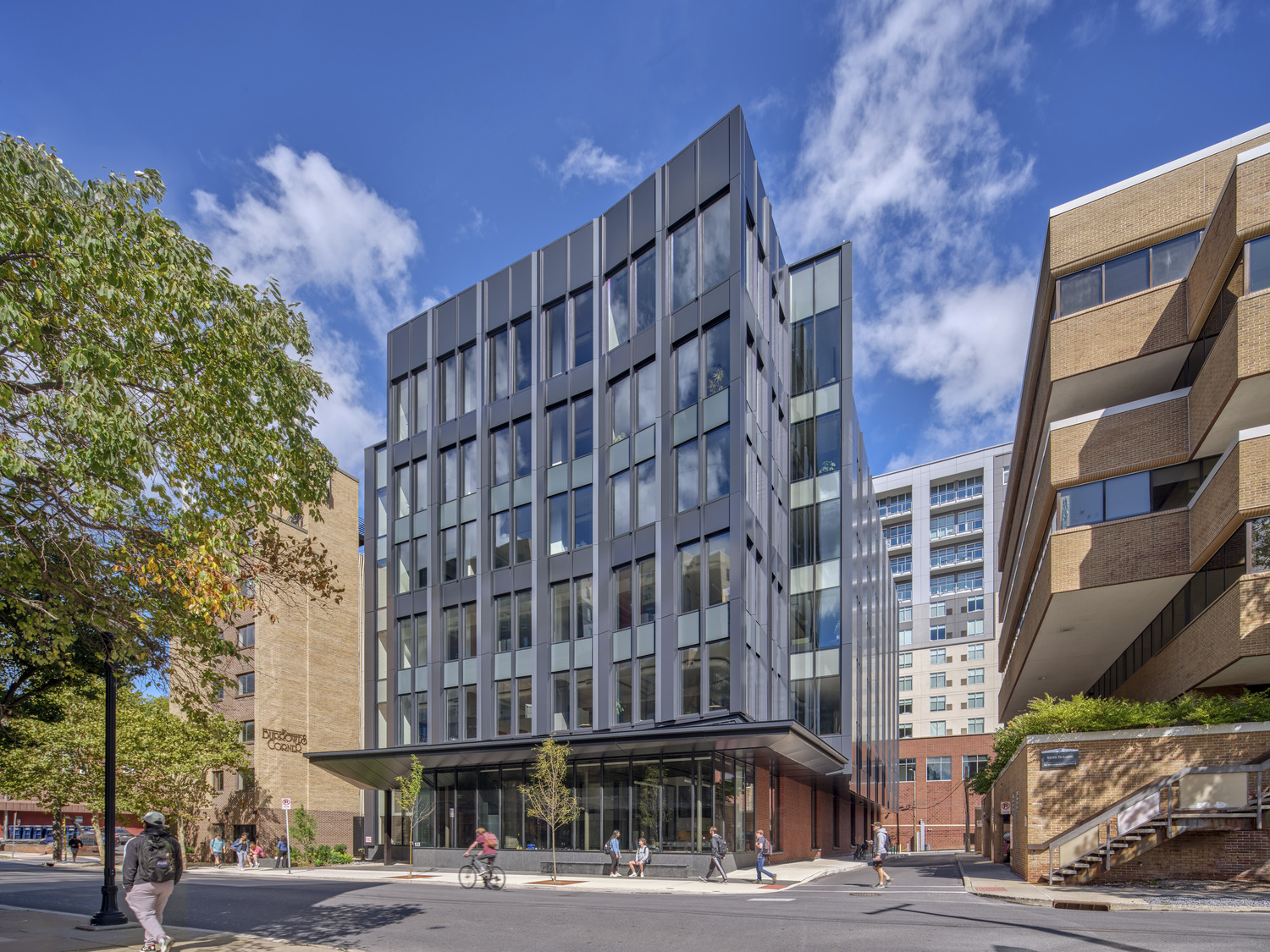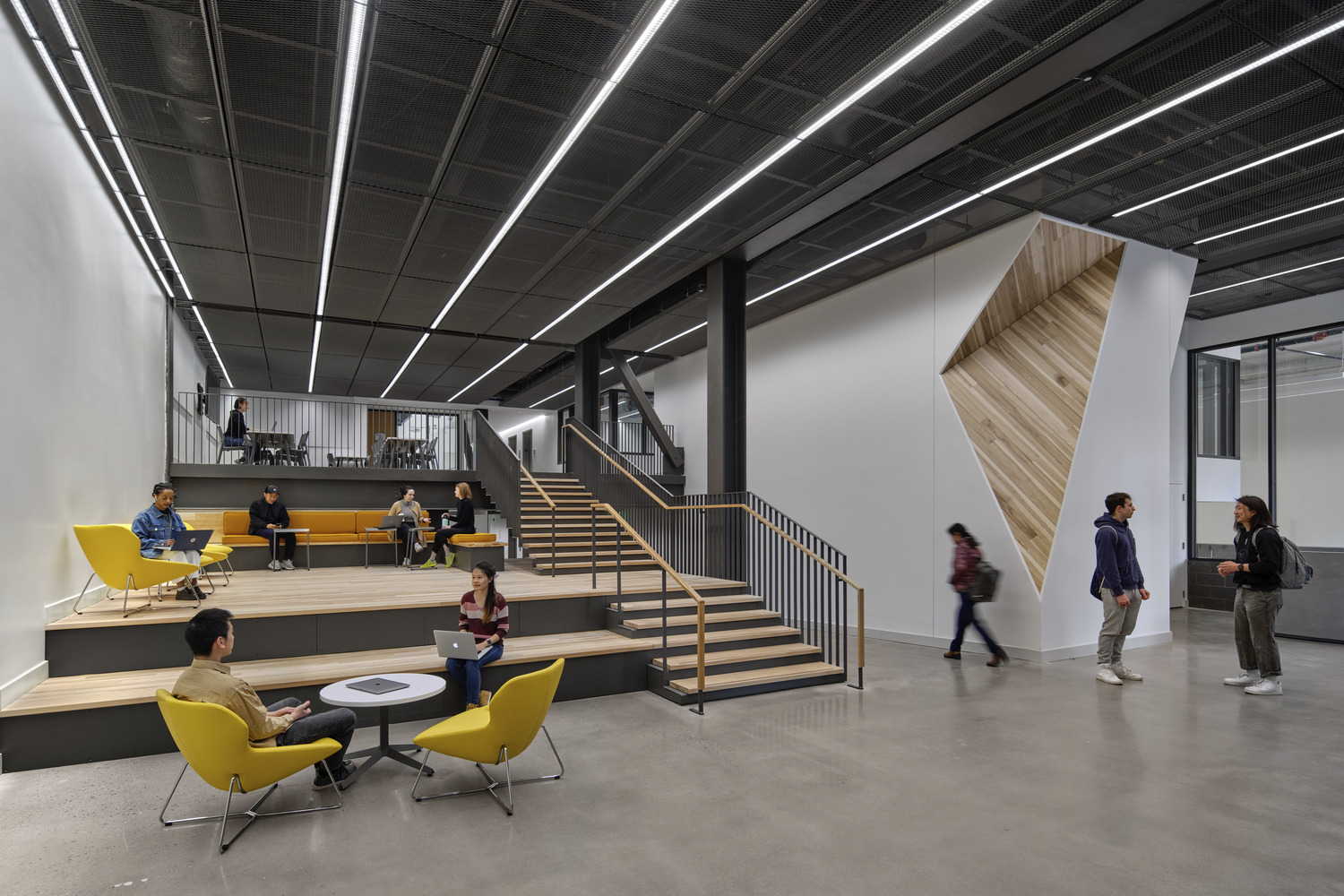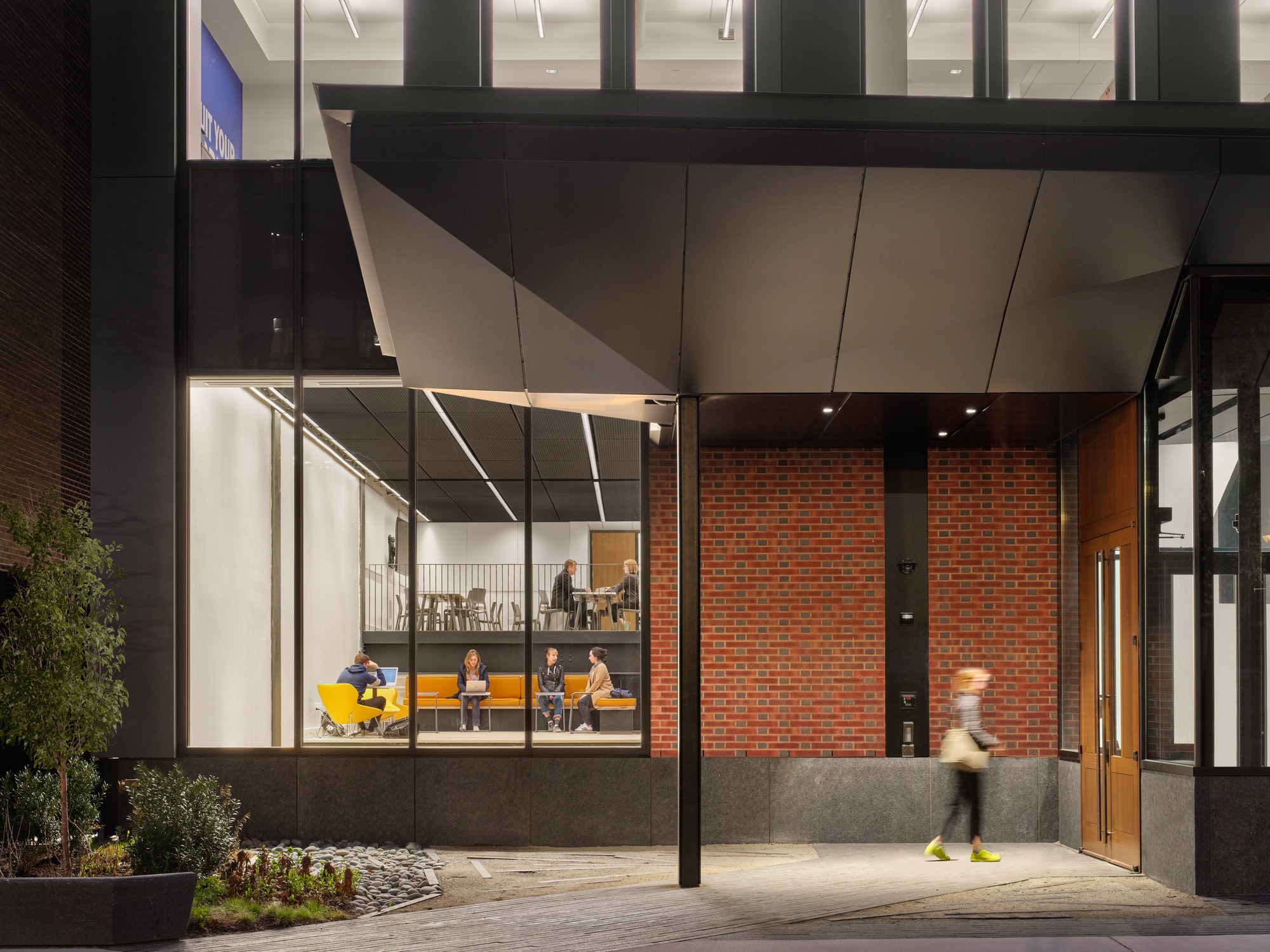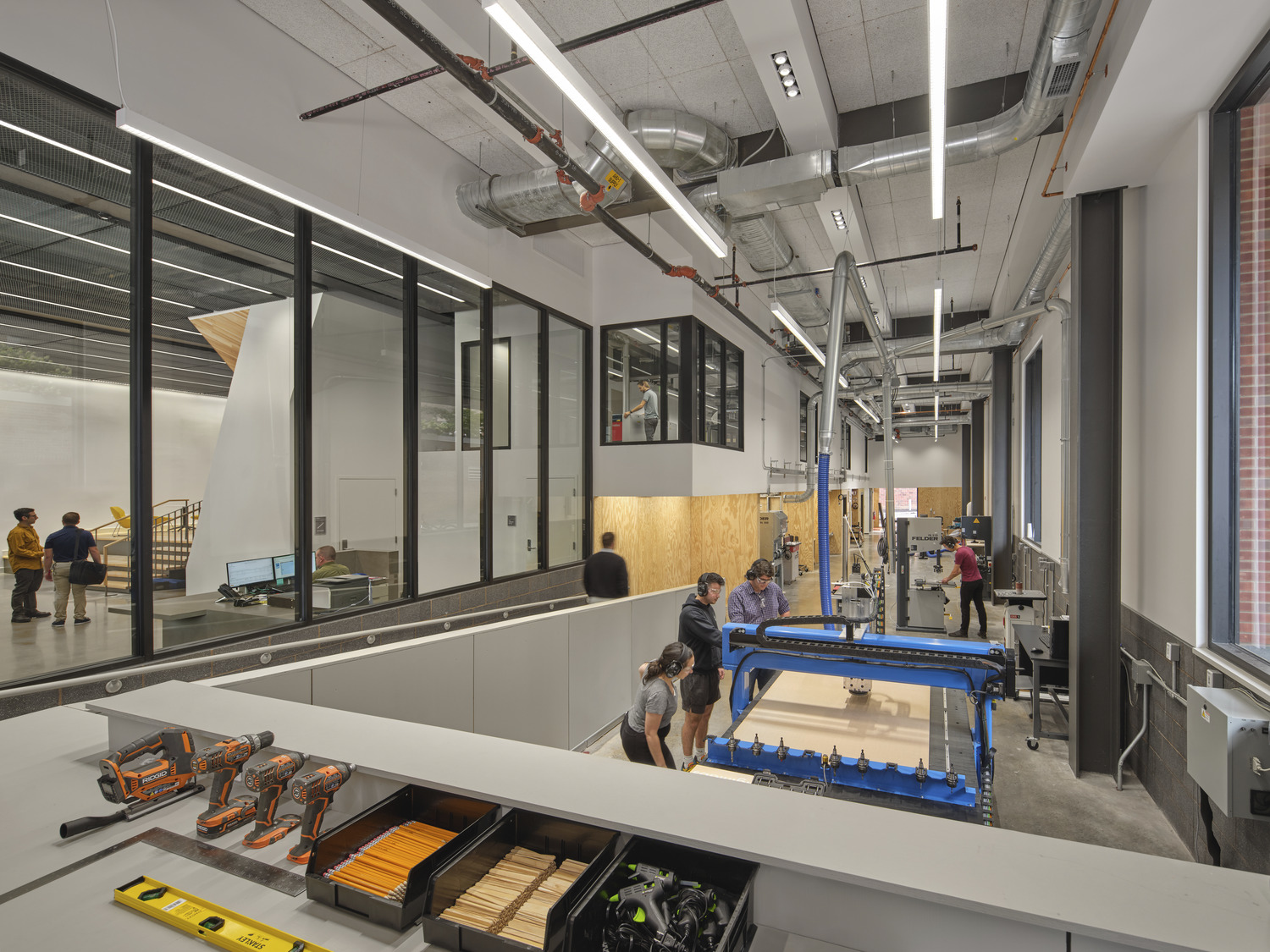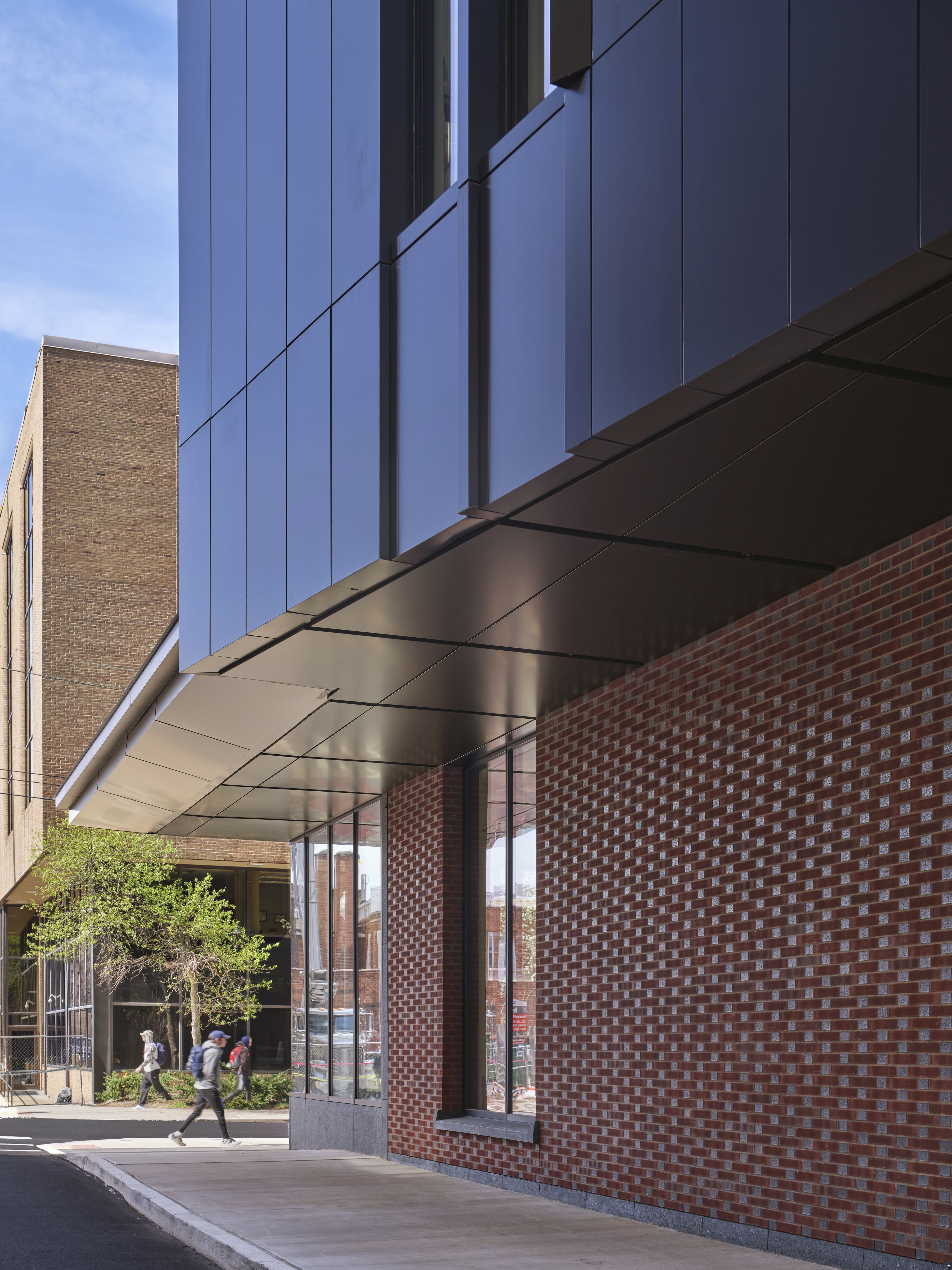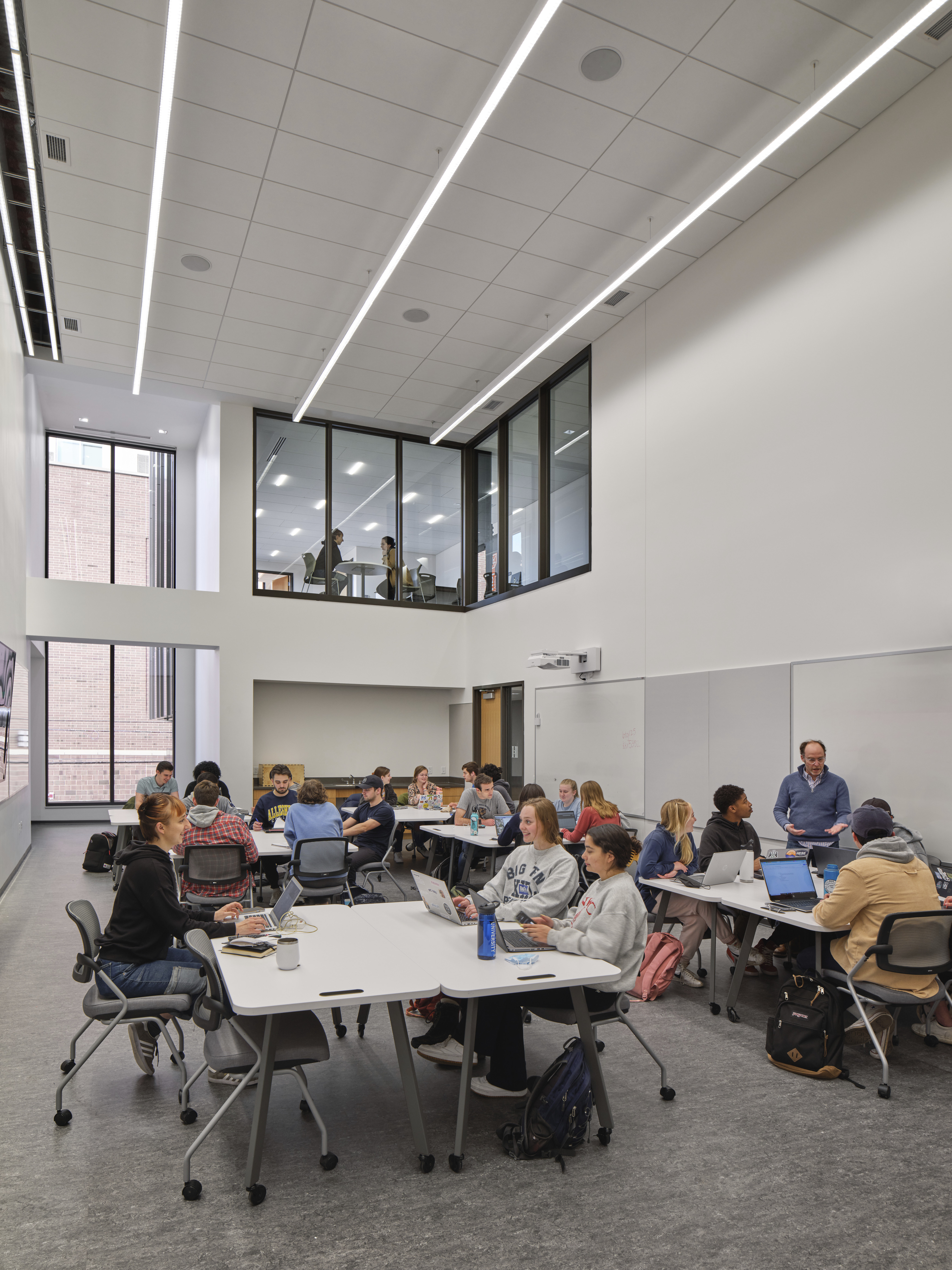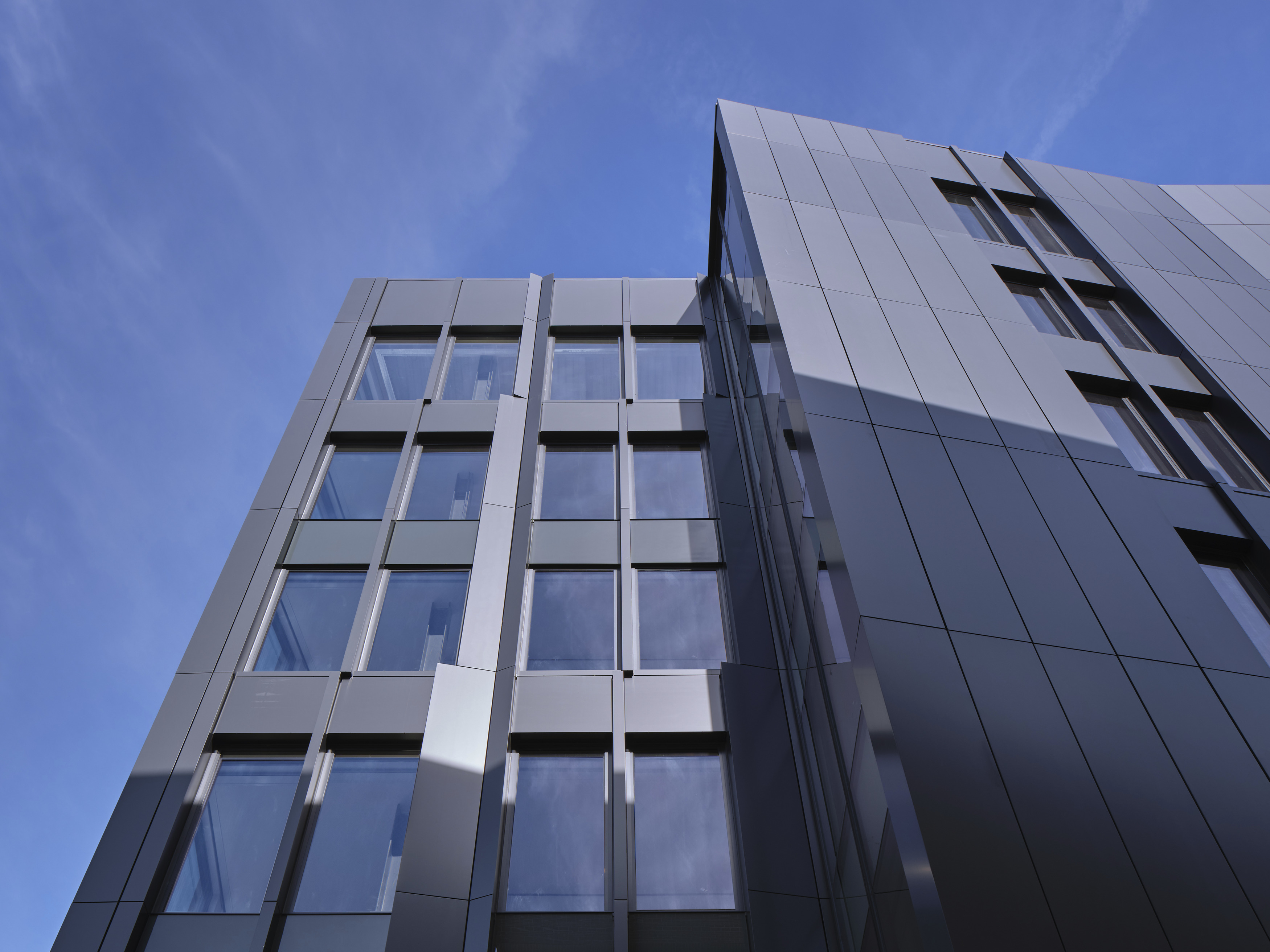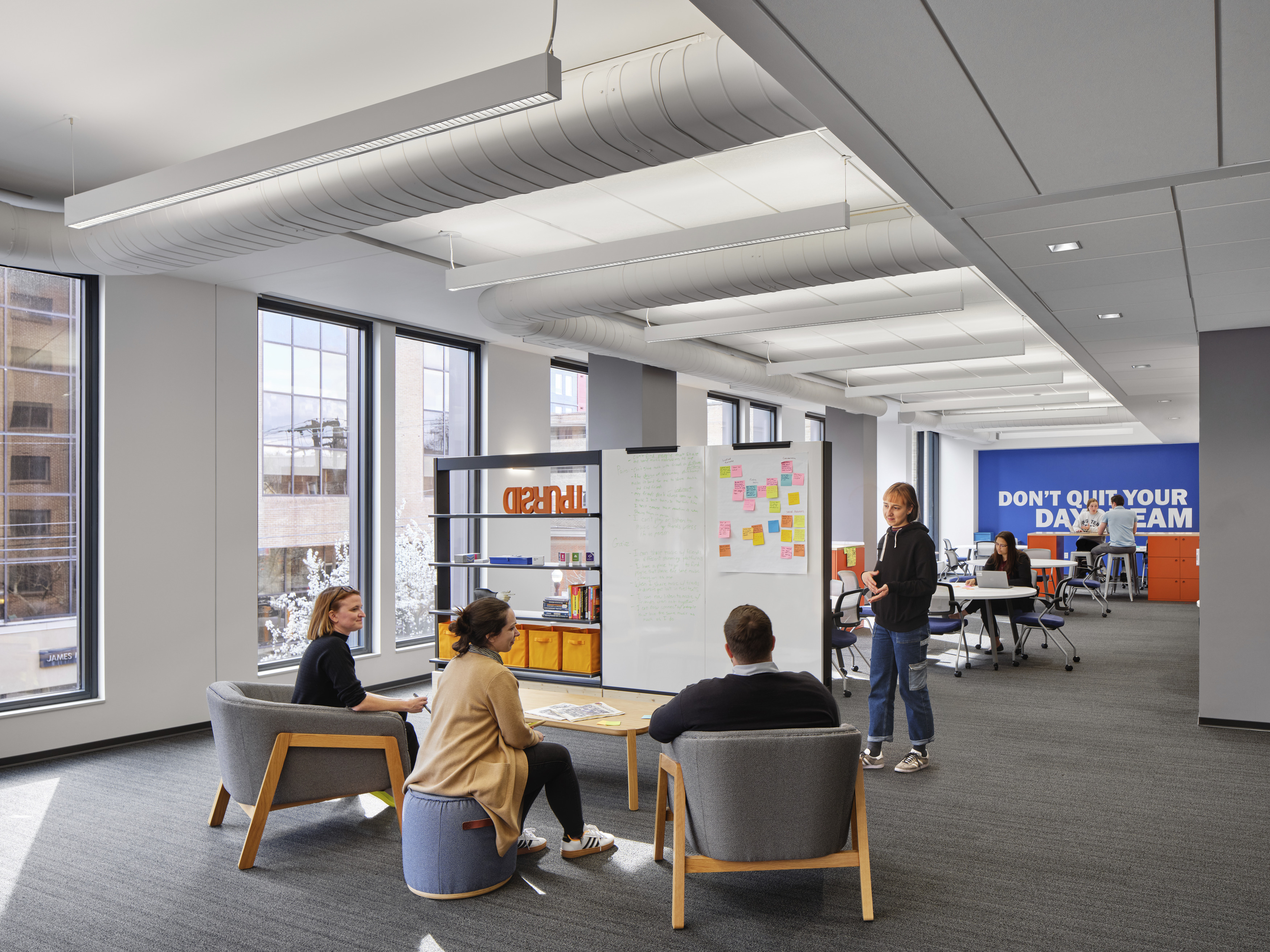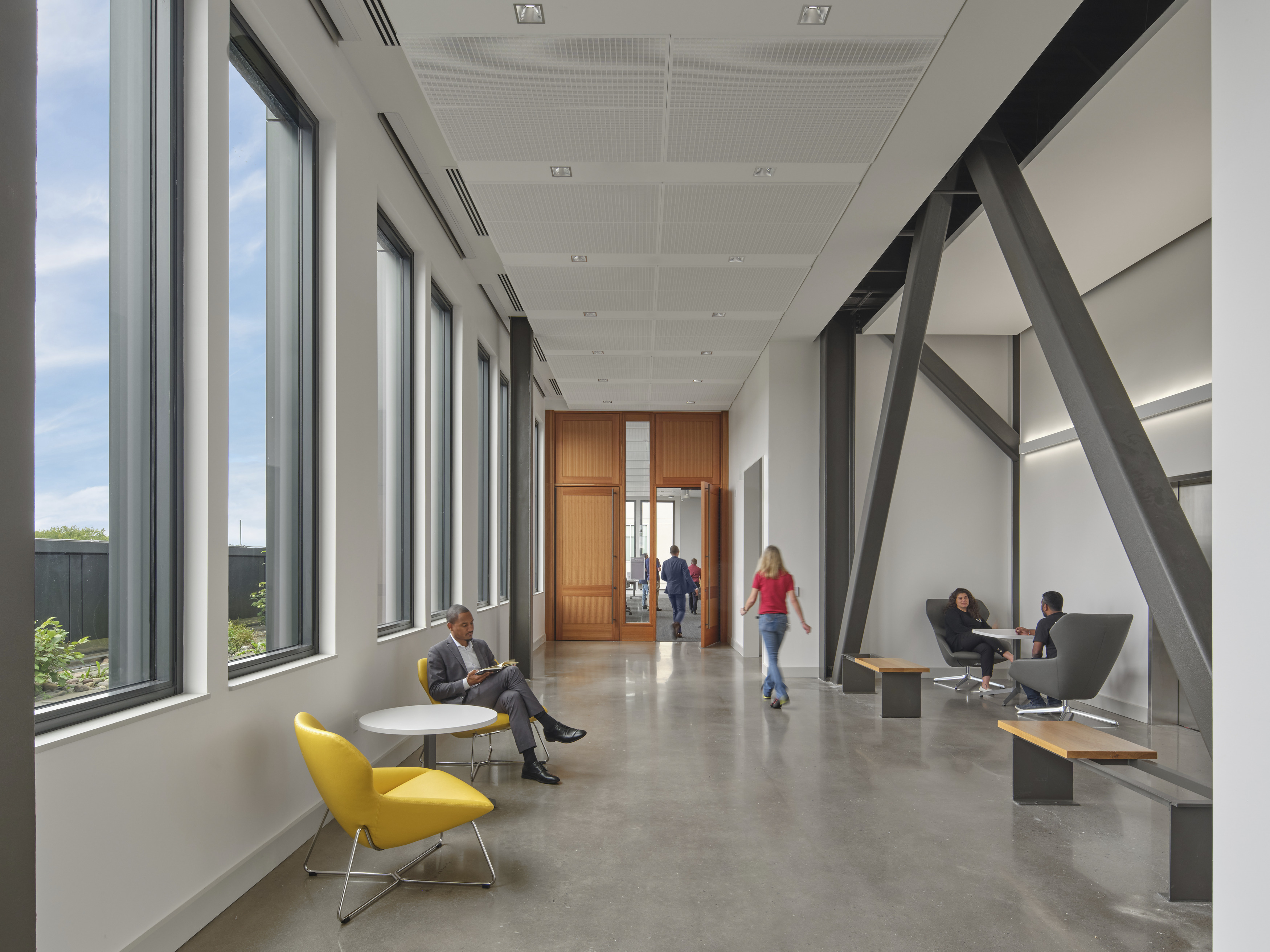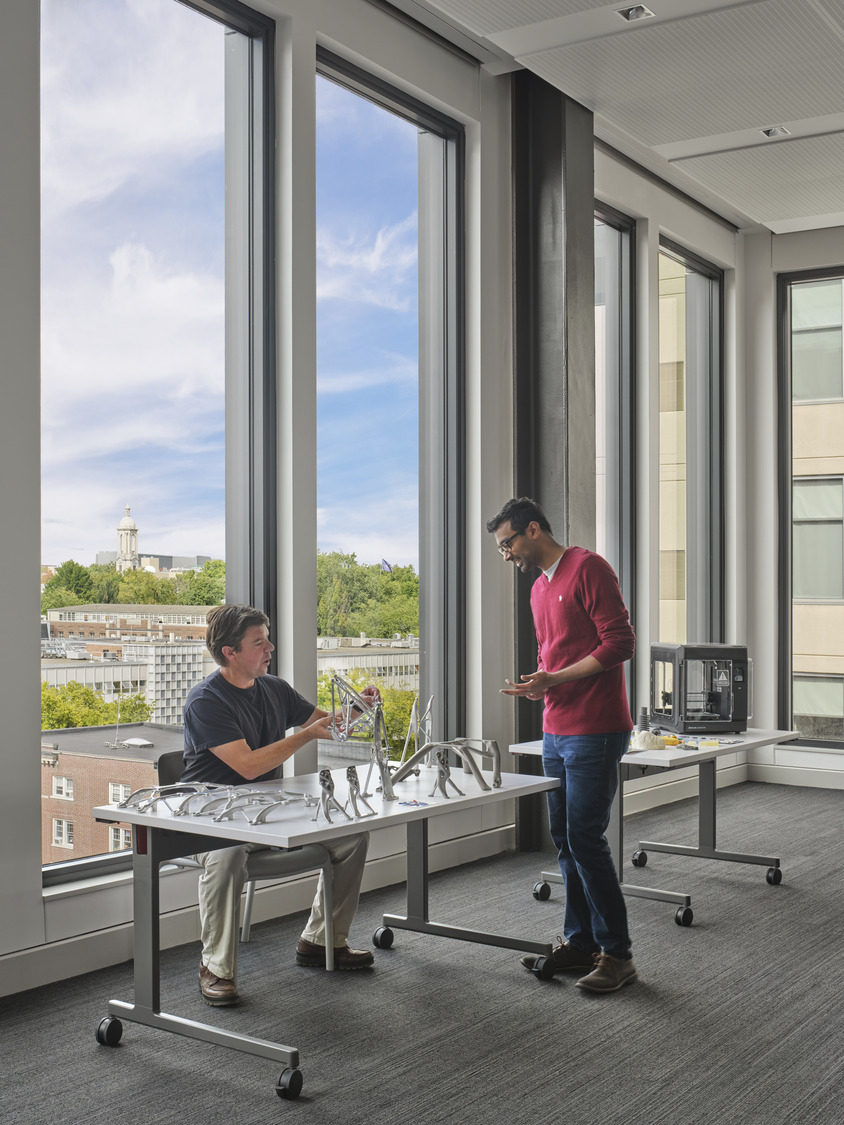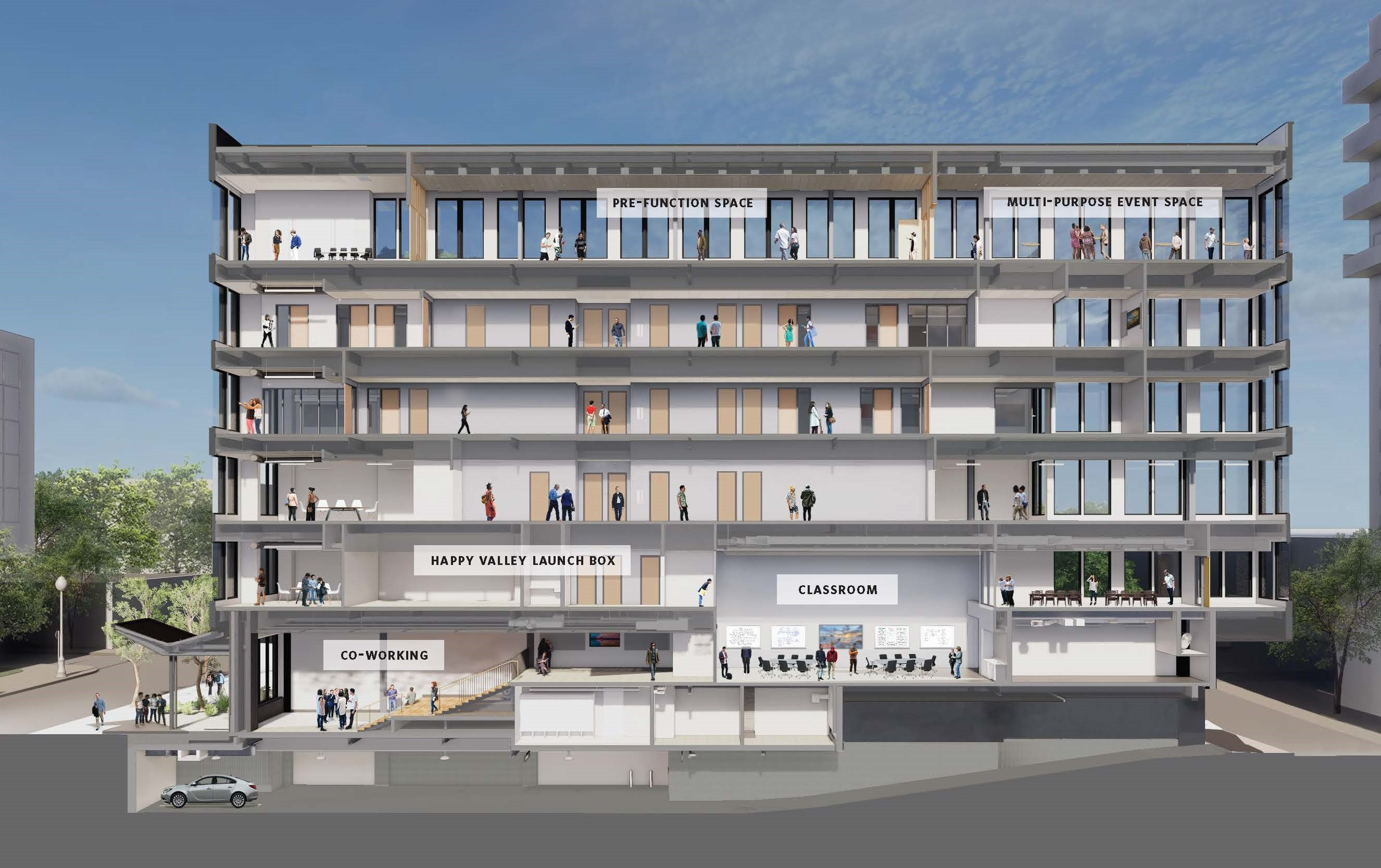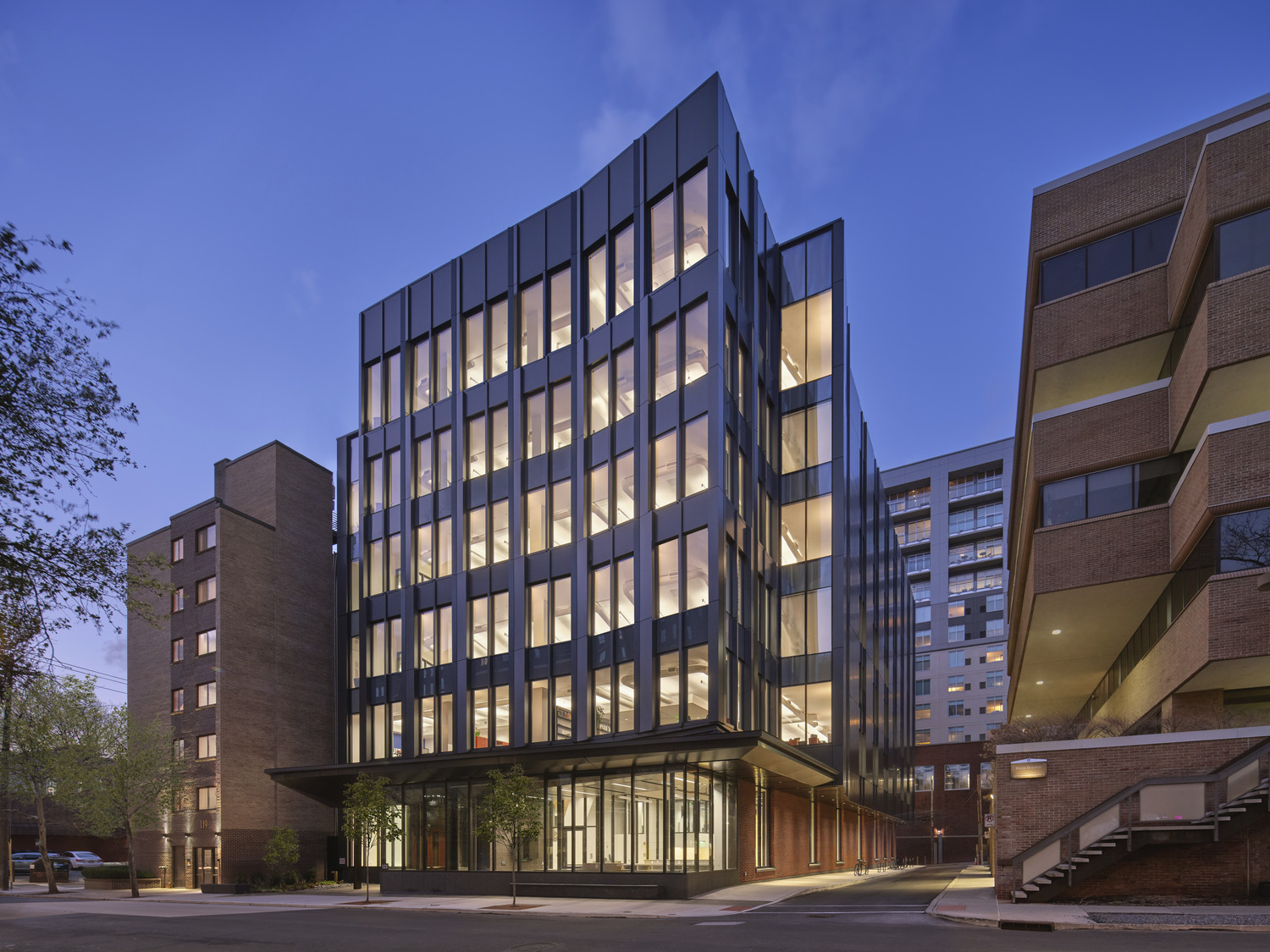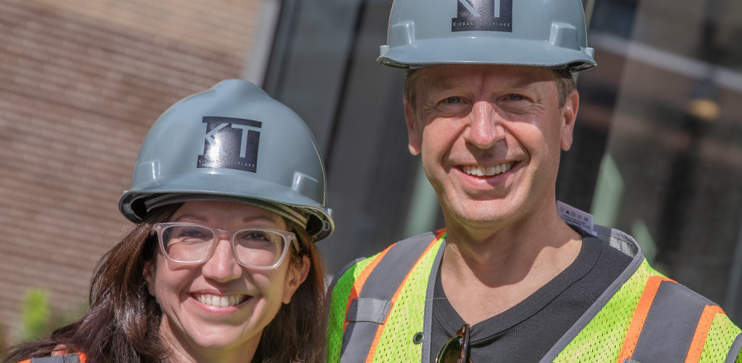How can a university facility foster student and community entrepreneurship in a shared urban location?
The Eric J. Barron Innovation Hub is a thriving nexus for student and community entrepreneurship and home to Invent Penn State, a Commonwealth-wide initiative to spur economic development, job creation, and student career success. As Penn State's first ground-up building in downtown State College, it promotes a culture of inquiry and exploration beyond the confines of campus. In alignment with the University's enduring ethos of teaching, research, and service, the Innovation Hub is a critical component of Penn State's entrepreneurial ecosystem, providing resources and opportunities for students across disciplines, as well as businesses and start-ups throughout Pennsylvania.
© Halkin Mason Photography
The 85,000-square-foot LEED Gold-targeting building features state-of-the-art entrepreneurial and innovation resources, such as rapid prototyping and fabrication labs, public co-working areas, an interactive classroom, top floor meeting spaces with panoramic views, and collaboration commons. These spaces were designed to accelerate innovation and technology commercialization, and to support local start-up companies through knowledge sharing and mentorship.
The makerspace and technology labs provide access to cutting-edge machinery and rapid prototyping for all students, faculty, and community entrepreneurs. These free services also include equipment training, skill-building workshops, and one-on-one consultations.
The development of the vertical section reflects a programming process in which University stakeholders, the design team, and the construction manager sought opportunities for connection, daylight, and view that would offer both programmatic synergy and construction efficiency. © KieranTimberlake
The design and construction of the building embraced innovation as well. The highly-insulated, metal rainscreen facade was prefabricated into large modules, reducing on-site construction time and waste and affording rapid enclosure during construction. Building systems are fully electrified, anticipating the greening of the central Pennsylvania grid, and a novel air-recirculation and cleaning system and operable windows integrated with HVAC reduce energy-use and improve indoor air quality. The material palette and architectural details celebrate the structure and systems, pairing these exposed elements with warm, tactile accents reminiscent of the University's hallmark vocabulary including regionally native wood species, brick, and granite.
Through careful study of the municipal zoning code, the design supports a welcoming streetscape that prioritizes pedestrian and bicycle transit. A disused, narrow alleyway has been repurposed as an inviting and walkable connector. Programs are strategically linked to the exterior, embracing a low-energy philosophy of targeted glazing in conjunction with a highly-insulated exterior envelope.
The program was developed to be independent of the typical College and Departmental hierarchy, promoting transparency and inclusion and welcoming all users. A nuanced approach to the municipal zoning requirements allowed for the development of a pocket garden with benches and a large canopy over the entrance, inviting pedestrians to linger while waiting for the bus or a friend. At either side of the entry, large expanses of glass highlight the makerspace and public coworking commons, encouraging students and community members to stop in and learn more.
© Halkin Mason Photography


